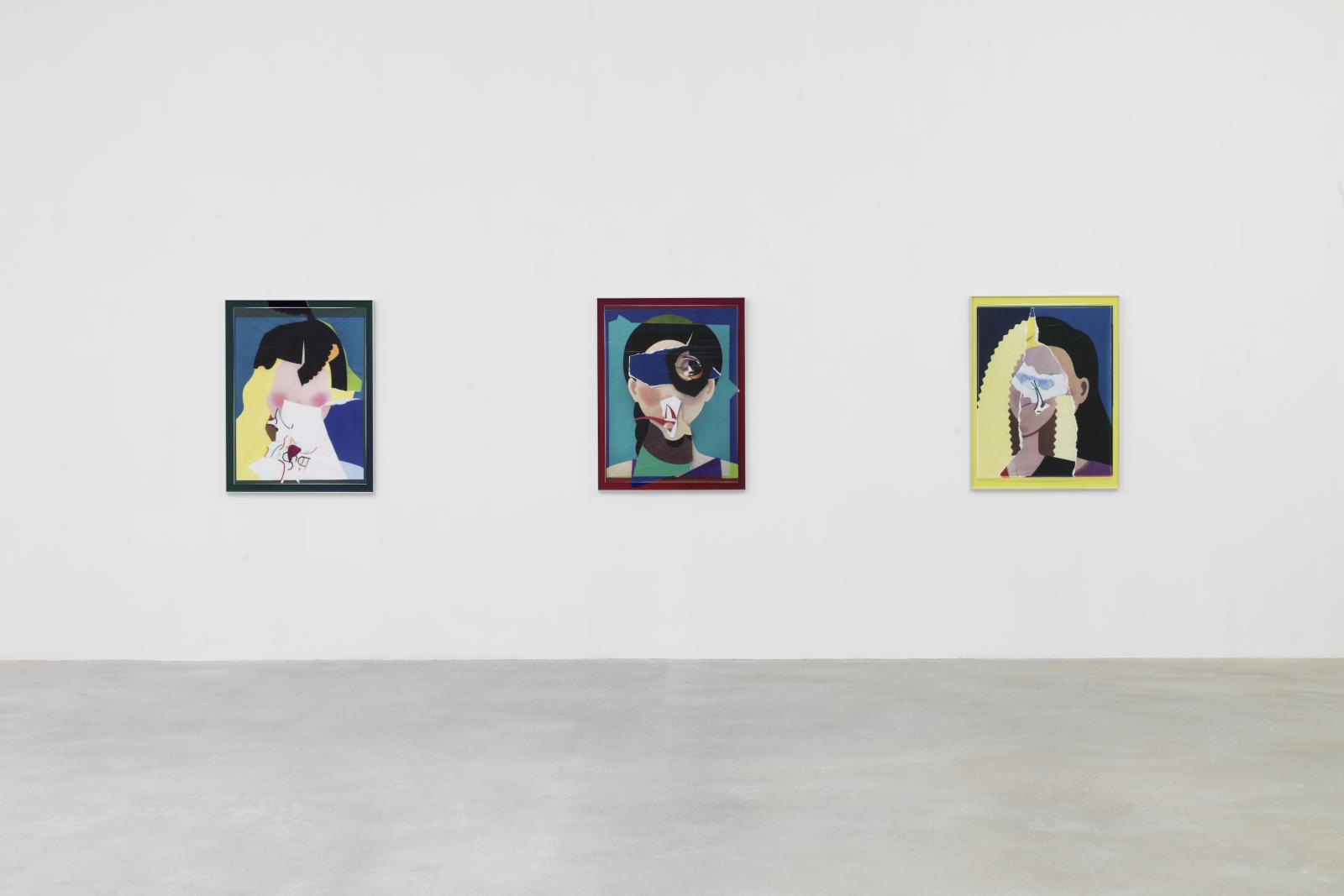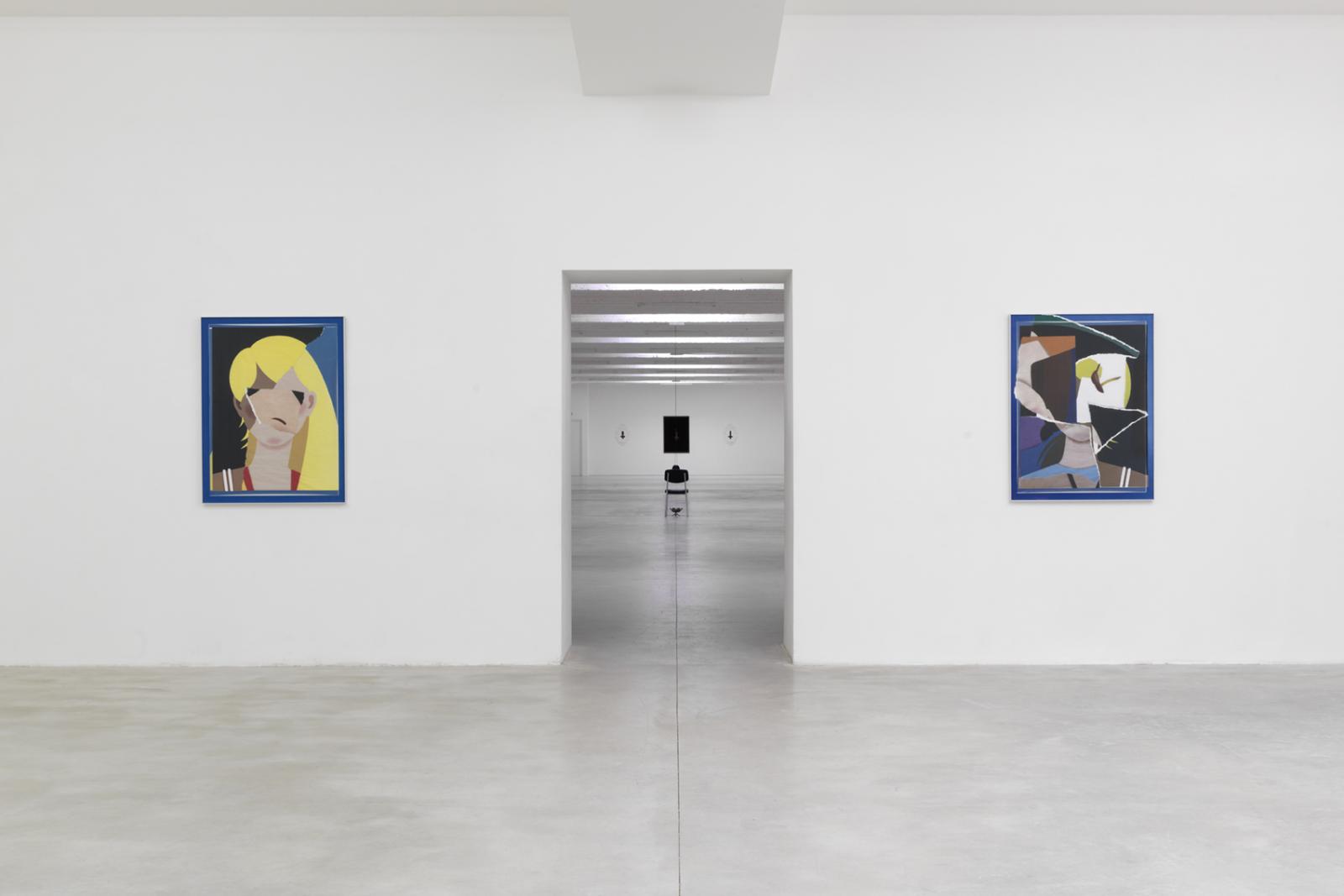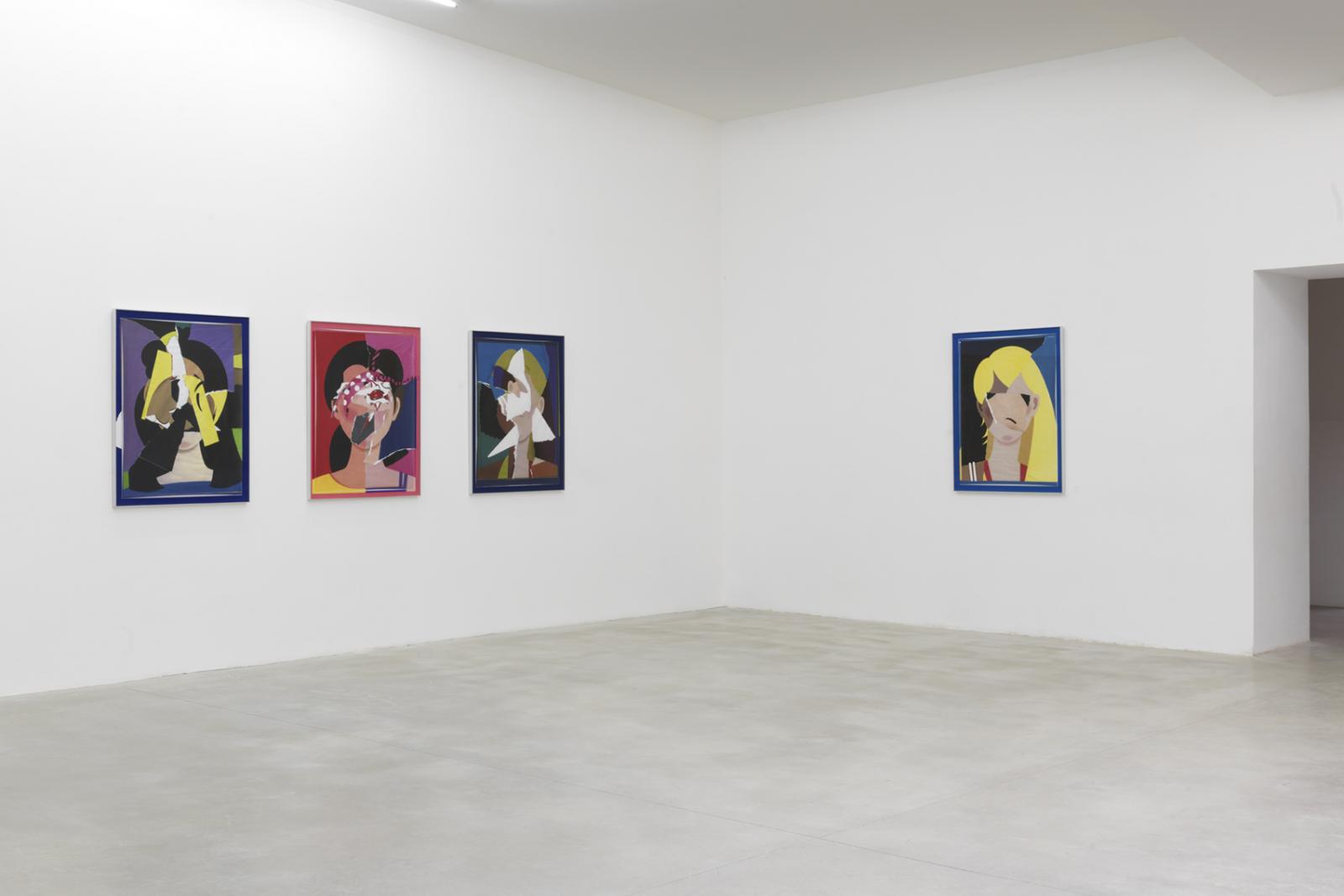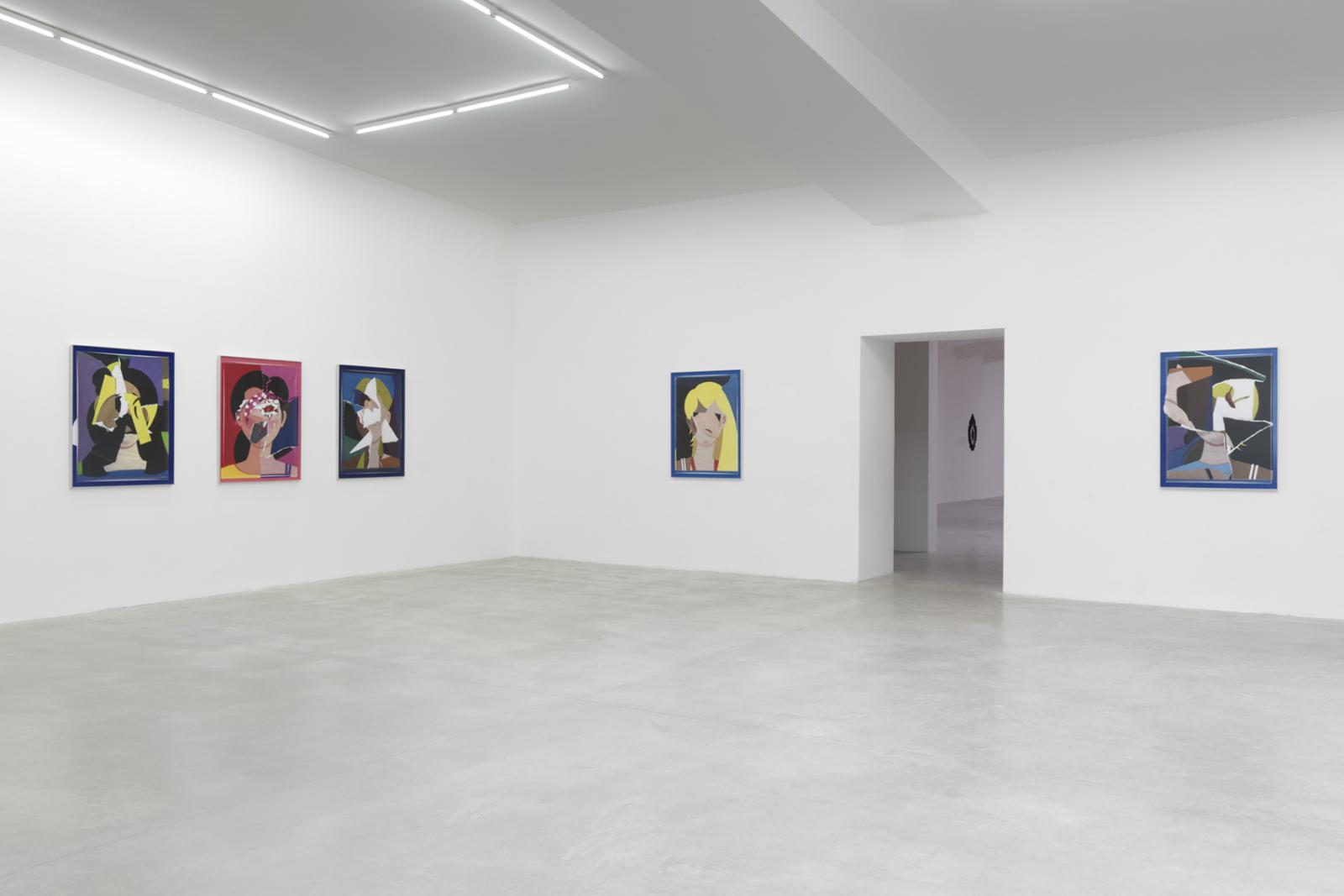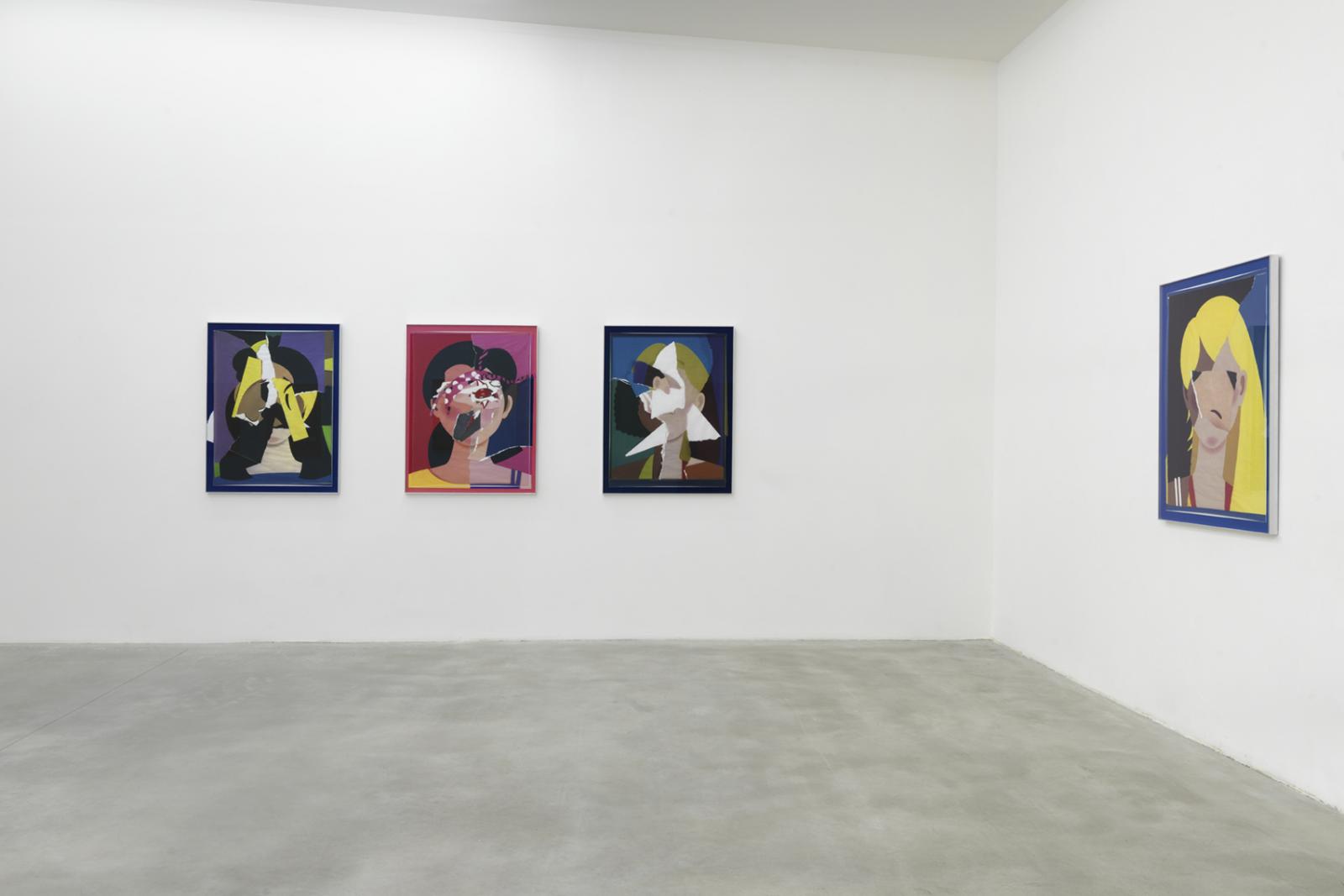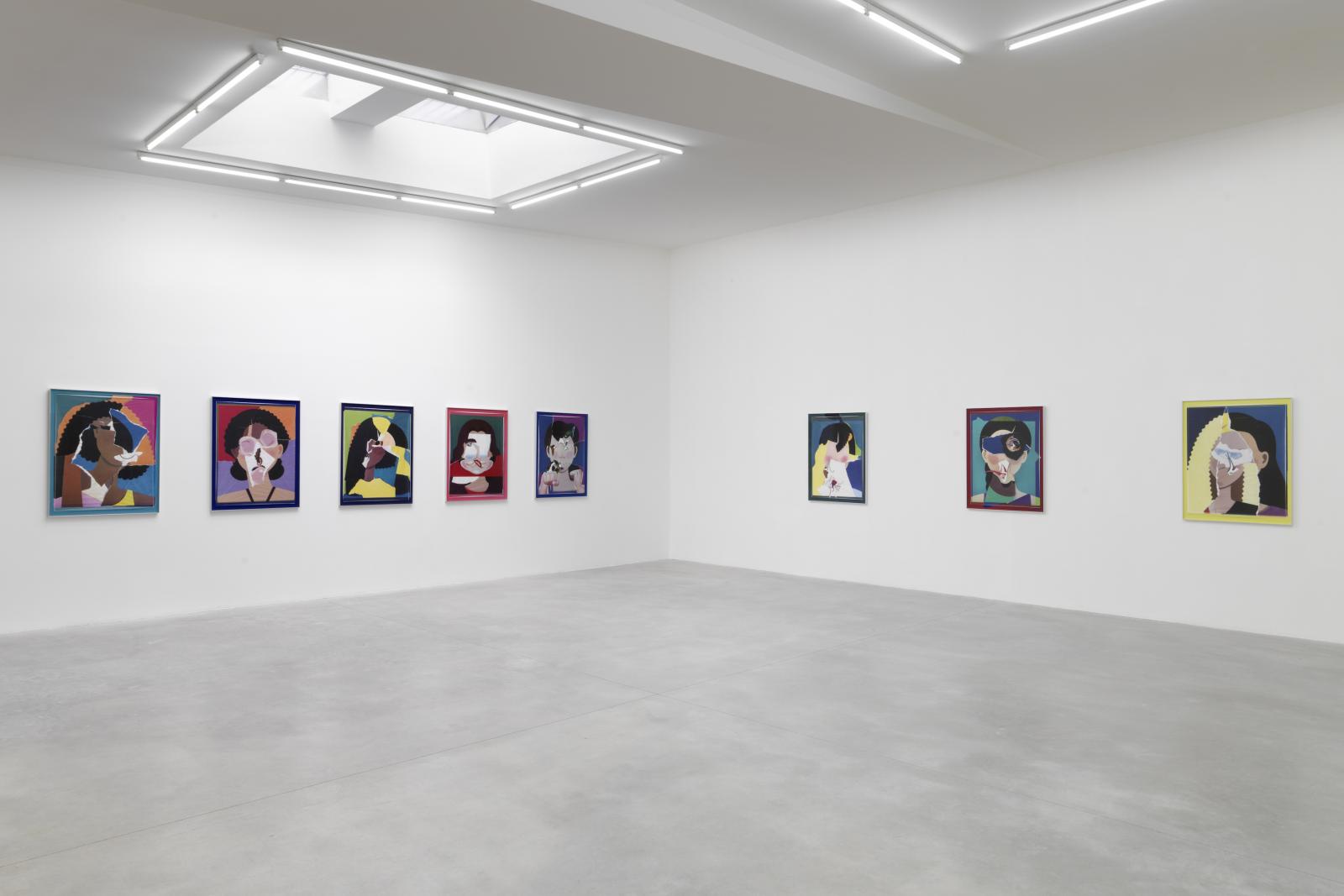Marina Faust
It's Only You
Avec le soutien de Bundeskanzleramt Österreich
It’s Only Her
During an evening at a restaurant, Martin Kippenberger, whom Marina Faust met in Vienna in 1996, drew a hypothetical portrait of her fifteen years later. He gave it to her, saying: “It’s only you.” More than fifteen years have passed, and Marina Faust is glad that she does not look like the portrait in question, but she is making use of the title “It’s Only You” for the exhibition of works she has been working on for some years—portraits, as it happens. They have come about from her encounter with an album for children consisting of incomplete portraits to be personalized with sheets of stickers offering various possibilities of mouths, eyes, and hair. They are portraits of women, and Marina Faust sees in them a mischievous exhortation to produce “the perfect woman,” complying with conventional criteria of stereotypical beauty. Faust gives them a completely different treatment, tearing those portraits, not respecting the conventions of their completeness with facial elements to be stuck on, tearing again, altering the backgrounds, photographing the results and then tearing again—involving herself in as many operations as are necessary to keep the idea of a perfect woman at bay.
At the core of Marina Faust’s practice has always been photography—she was professionally involved in interior photography for the magazine Architectural Digest, and developed a radical and unusual approach to exhibition photography1 —and the photographic interpretation of the body in particular, as is evident in her uninterrupted collaboration with Martin Margiela for some twenty years, but also in her publishing activity for different fashion magazines, and in her personal work (The Strati Portraits, 2012), which led her, notably, to produce lots of portraits of Franz West as well as a number of self-portraits: Self-Portrait with Dots, 2009; Self-Portrait after Marcel Duchamp, 2008; Lust (Self-Portrait), 2004. It is in fact the body that links all these activities together, including the “traveling chairs”—old chairs which she fits with wheels that become vehicles in her shows.
In the Grenoble Museum there is a painting2 by Albert Gleizes (1881-1953) which I think about when I look at all the portraits making up “It’s Only You.” It depicts a seated “legislator;” his face is given a material quality through a single eye (in fact a black disk), its surface made of a pink flat tint, and around it careful features make the whole thing vibrate—the face in effect comes to life. It is a late Gleizes but it recalls the injunction proffered in Du Cubisme3 which he wrote with Jean Metzinger in 1912: “May the picture imitate nothing.” And this too: “Some forms must remain implicit and such that the viewer’s mind is the place chosen for their concrete birth. Let us also know how to cut any region where activity is exacerbated into large surfaces.”
In spite of their severe deconstruction, and probably also because of it, Marina Faust’s portraits each have a special identity, and attain that “character” quality without which the portrait does not add up to much. “The viewer’s mind” may all the more readily become “the place chosen for their concrete birth” because the titles of the works complement the imaginary biographies of the figures: Dramatic Adolescent at Ease, Once on TV, Outlaw Nurse and Genius Lifetime Friend—to mention just these few in this pantheon. The pantheon of our contemporaries.
—Éric Troncy
1. For the last ten years she contributed to the art and architecture magazine Frog.
2. Albert Gleizes, Le Législateur, 1937, oil on canvas, 142 x 96 cm.
3. Albert Gleizes and Jean Metzinger, Du Cubisme, 1912, Eugène Figuière & Cie éditeur.
